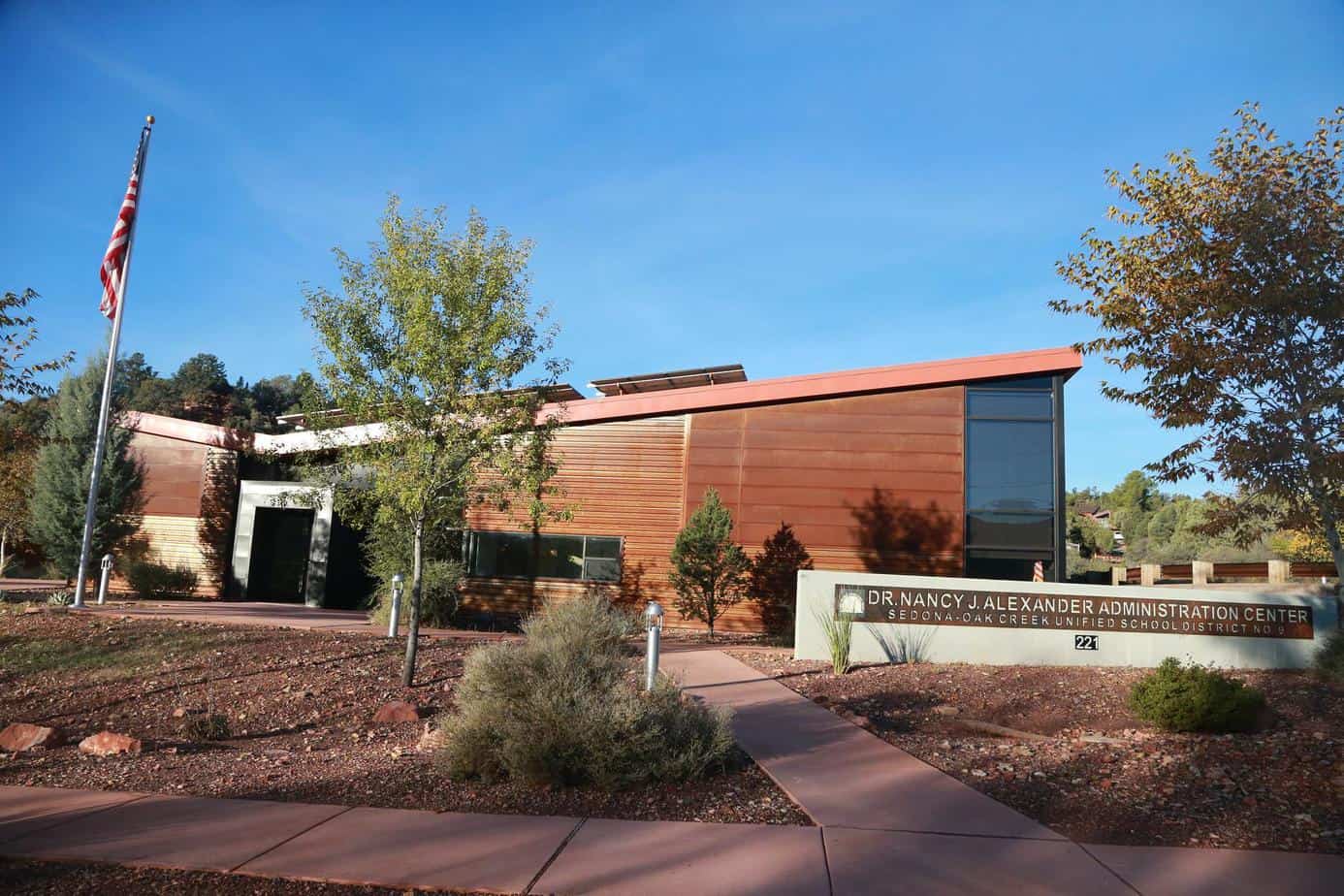The Sedona-Oak Creek School District Governing Board opened its Tuesday, Nov. 13, meeting with Board Vice President Heather Hermen and Superintendent Dennis Dearden giving plaudits to individuals who, in their view, were instrumental in the campaign for the continuation of Proposition 447, the SOCSD Budget Increase Override, which passed comfortably on Nov. 6.
Hermen said that Sedona Mayor Sandy Moriarty thanked the board for “taking the high road” during the campaign and appreciated that, whenever false information about Prop. 447 was circulating, board members took the time to sit down with individuals and discuss the facts. District Cirriculum Director Deanna DeWitt presented on the topic of high student achievement, which is the chief priority of five detailed in the One District, One Team strategic plan.
The other priorities, on which the district’s administrative team and strategic planning committee must continuously brief the board, per Dearden’s instruction, include: Highly performing and supported staff; positive, safe and healthy environment; effective use of resources; and effective communication.
DeWitt outlined the subcategories within that first priority of high student achievement. These include, but are not necessarily limited to, the following:
- Academic, social and physical needs: Ensuring that counselors are available to all students, English language learners get the support they need and that there is a continued investment in data-driven learning for students.
- School-to-home learning: Making sure that parents have the resources and information they need to help their child succeed, and that they are kept abreast of the district’s initiatives.
- Early childhood education: Maintaining partnerships with the HeadStart programs; the Child Find Outreach for special education from birth to 5 years old; and the Sedona Rotary Club’s Imagination Library.
- Relevant and rigorous curriculum: Meeting the new state standards for science and social studies, and offering diverse, engaging courses for students.
- Enhance and sustain enrichment opportunities: Adding two new Advanced Placement courses for the high school — AP Human Geography and AP Art — maintaining relevant capstone projects and furthering partnerships with Yavapai College.
DeWitt also presented to the board on possible academic calendar changes, which involve moving a teacher training day from April to the start of the year, and adding more days off for fall break in October while leaving Thanksgiving break with three days off. These changes were not officially proposed and no action was taken on them.
Finance Director Heather Shaw-Burton presented the first budget revision of the fiscal year, which was informed by the district’s 40th day average daily membership numbers. With the exception of grades nine through 12, enrollment predicted in the district’s adopted budget were lower than the 40th-day numbers. Kindergarten through eighth grade enrollment experienced the greatest discrepancy — 548 students in the adopted budget, and 463 actually enrolled at the 40th day of school. In total, the 40th day average daily membership was 90 students fewer than budget projections. Furthermore, the adopted budget was $6.6 million, and the first budget revision — due to current year funding and having to adjust to changes in average daily membership — brings it down to $6.2 million.
Shaw-Burton was quick to point out, however, that the board has found creative ways to cover this $400,000 difference. “One of things we’ve found since the consolidation, we have a lot resources that were sitting in closets, and found on shelves, that we were able to disperse across the district,” Shaw-Burton said.
Shaw-Burton stressed that the district already had $200,000 totally unallocated, set aside for contingency purposes. The next largest sum of savings to help cover the $400,000 gap came from the conservative hiring over the summer. With enrollment trending lower than predicted, potential new teachers that the district had planned to hire before the school year were no longer in need, saving $150,000.
Lastly, a fortuitous combination of line-item savings — i.e. discounts for buying supplies at one time for the whole district, utility costs running lower than predicted, lower liability insurance and less retirement leave payouts than originally forecast — amount to roughly $50,000, helping the district balance the budget.
Board member Zach Richardson noted that, since the district was able to avoid laying off teachers in the midst of lower enrollment trends, classroom sizes are now smaller. Smaller classrooms, he said, translates to more individual attention on students and a higher quality of education.
“Our classroom sizes are very, very competitive as far as within the state,” Shaw-Burton said in response to Richardson’s comments.
“Most of our elementary classes are in the low 20s, and in our high school classes, I don’t believe there are many high school classes that are more than 30 students.”
At the end of the budget discussion, Shaw-Burton suggested that, with the passage of the override, the time is ripe for the district to ramp up promotion of tax credit funding. This prompted many on the board to share their thoughts on some of the public’s misconceptions.
“People don’t understand that it’s a credit as opposed to a donation. And you can either have your money go to the state or go here, to the school district,” Board President Randy Hawley said.
Richardson said that, if the number of people who voted ‘yes’ on the continuation of Prop. 447 participated in tax credits, approximately $750,000 would be generated for the district. Also at the meeting, the board approved the resolution and articles of incorporation for the Sedona Educational Foundation, which Hawley said he hopes will become a significant helper in raising funds in the years to come.






















